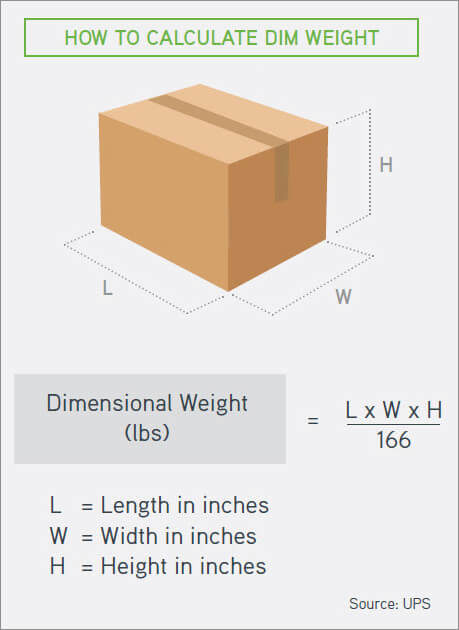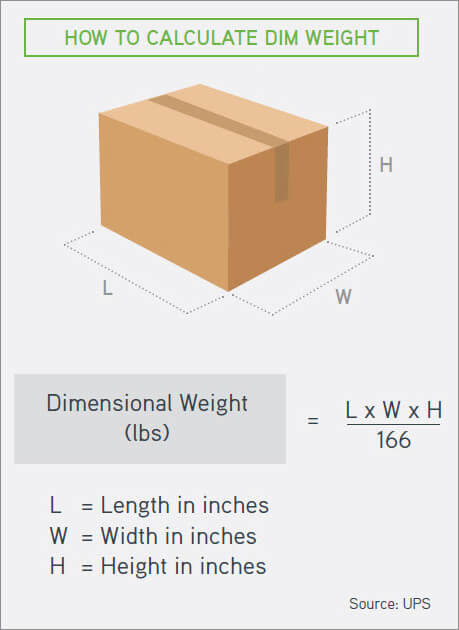Dimensional weight is the newest measurement for calculating shipping fees on all ground packages that are less than 3-cubic feet. Dim-weight pricing is based on a shipment’s volume rather than its actual weight. The new pricing structure is already being used by major carriers, including FedEx, UPS and DHL.
Want to protect yourself from the increases associated with dim-weight charges? Take a look at these tips from Sealed Air’s “Top 10” list and then contact Shorr to implement these cost-saving solutions:


1. Size does matter!
Choose the appropriate package based on the size of the item – Don’t forget mailers as an option.
2. Use high-quality materials for your package.
Consider space consumption, strength, cushioning, and durability.
3. Blocking and bracing items are essential.
If your item is stationary and unable to move during shipping, it will be less likely to sustain damage.
4. Measure the actual outside dimensions.
When determining dim weight measure length, width and height after packaging. Measurements provided by a box manufacturer often do not reflect exterior dimensions.
5. Keep track of total shipping charges.
Make sure you are not being incorrectly charged the dimensional weight price.
To view the full list of tips, click here.
| The impacts of dim-weight pricing could be costly for companies not optimizing their packaging, resulting in up to $550 million per year in additional shipping costs based on dim-weight changes.The packaging experts at Shorr, work to offer products, equipment, and services to help you protect your products and keep costs down. For a full analysis or more information on more effective packaging solutions, fill out the form and contact us. |
Dimensional weight is the newest measurement for calculating shipping fees on all ground packages that are less than 3-cubic feet. Dim-weight pricing is based on a shipment’s volume rather than its actual weight. The new pricing structure is already being used by major carriers, including FedEx, UPS and DHL.
Want to protect yourself from the increases associated with dim-weight charges? Take a look at these tips from Sealed Air’s “Top 10” list and then contact Shorr to implement these cost-saving solutions:

1. Size does matter!
Choose the appropriate package based on the size of the item – Don’t forget mailers as an option.
2. Use high-quality materials for your package.
Consider space consumption, strength, cushioning, and durability.
3. Blocking and bracing items are essential.
If your item is stationary and unable to move during shipping, it will be less likely to sustain damage.
4. Measure the actual outside dimensions.
When determining dim weight measure length, width and height after packaging. Measurements provided by a box manufacturer often do not reflect exterior dimensions.
5. Keep track of total shipping charges.
Make sure you are not being incorrectly charged the dimensional weight price.
To view the full list of tips, click here.
The impacts of dim-weight pricing could be costly for companies not optimizing their packaging, resulting in up to $550 million per year in additional shipping costs based on dim-weight changes.
The packaging experts at Shorr, work to offer products, equipment, and services to help you protect your products and keep costs down. For a full analysis or more information on more effective packaging solutions, fill out the form and contact us.
